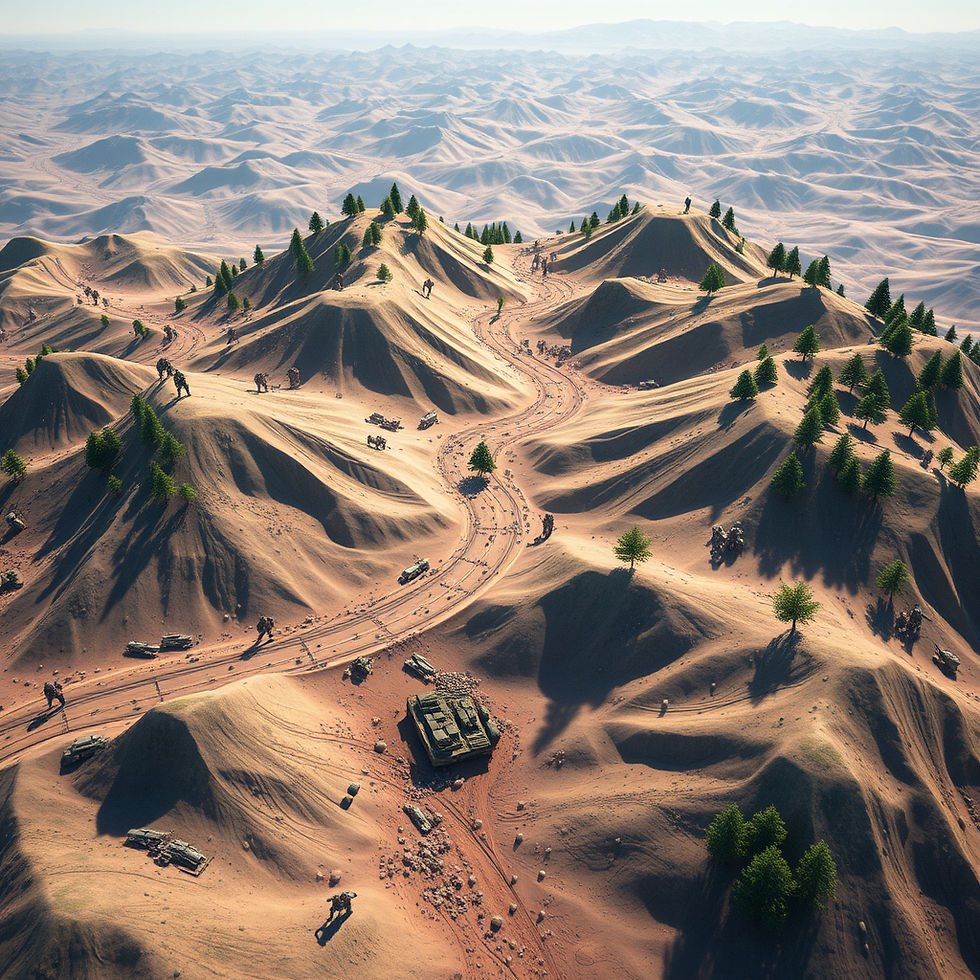Top 5 Game Development Software Tools Every Creator Should Know
- Geniuscrate

- Aug 12
- 3 min read

Game development has evolved into a multi-billion-dollar industry, supported by powerful tools that streamline the process of designing, building, and deploying interactive experiences. These tools aren’t just for entertainment, but they’re also essential for creating simulations, training modules, and other immersive applications.
Whether you’re building a small indie game or a hyper-realistic simulation for industrial or defense use, the right software can dramatically improve efficiency, creative freedom, and the final product’s quality.
Here’s a closer look at five of the most recognized and widely used game development tools today.
1. Unity
Unity has become a household name in game development thanks to its flexibility and ease of use. It supports 2D, 3D, VR, and AR development and can deploy to over 20 platforms, including Windows, macOS, iOS, Android, PlayStation, and Xbox.
Unity’s key strengths include:
A vast Asset Store with thousands of pre-made models, scripts, and tools.
Strong community support, making it easy to find tutorials and resources.
Built-in physics, lighting, and animation systems.
Because of its performance and adaptability, Unity is used not just for games, but also for architectural visualization, medical training simulations, and interactive educational tools.
2. Unreal Engine
Unreal Engine, developed by Epic Games, is known for photorealistic rendering and cinematic visuals. It powers many AAA games and is increasingly popular in simulation and virtual production for film and television.
Key features include:
Blueprints Visual Scripting, allowing non-coders to build complex logic visually.
High-end physics and rendering capabilities.
Access to the full C++ source code, enabling deep customization.
Unreal Engine is a favorite for industries like aerospace, automotive, and defense; especially when realism and detail are critical.
3. Godot
Godot is a free and open-source engine that’s gaining attention among indie developers and studios looking for flexibility without licensing fees.
Why it stands out:
Supports both 2D and 3D development.
Uses GDScript, a Python-like language that’s beginner-friendly.
Completely open source, giving developers full control over their projects.
While Godot’s 3D features aren’t as advanced as those in Unreal, its lightweight nature and rapid iteration cycle make it appealing for certain simulation and educational projects.
4. CryEngine
CryEngine is known for high-end visuals and advanced rendering features. It was famously used in the Crysis series, which became a benchmark for PC gaming performance.
Advantages include:
Real-time global illumination.
Advanced AI and animation systems.
Royalty-based licensing model with no upfront cost.
Its steep learning curve means it’s often used by experienced teams, but the results can be visually stunning, making it valuable for realistic outdoor simulations.
5. Blender
While Blender isn’t a game engine, it’s one of the most powerful 3D creation suites available, and it’s completely free. Developers use Blender for:
3D modeling, texturing, and sculpting.
Animation and rigging.
Rendering and compositing.
Blender’s open-source nature and integration with Unity and Unreal Engine make it a staple in many studios’ pipelines. Assets built in Blender can be seamlessly imported into game engines for final use.
How GeniusCrate Uses the Best Game Development Tools in the Industry
At GeniusCrate, we don’t just choose one tool and stick with it, but we carefully match the right software to the right project.
For high-fidelity simulations that demand lifelike lighting, environments, and physics, we often use Unreal Engine. Its cinematic quality ensures that scenarios look and feel authentic, which is crucial for sectors like defense, aerospace, and industrial training.
For VR and cross-platform projects, Unity provides the flexibility we need to deploy experiences across multiple devices, from high-end VR headsets to mobile training apps.
We also use Blender extensively to create custom 3D assets including everything from detailed machinery to entire virtual facilities. This ensures that every element in a simulation is tailored to the client’s requirements.
By leveraging multiple industry-leading tools, GeniusCrate delivers projects that are:
Visually impressive for engagement and realism.
Technically optimized for smooth performance.
Custom-built to match each client’s industry and objectives.
This multi-tool approach is one of the reasons GeniusCrate is able to deliver training solutions that don’t just look good, but also perform flawlessly in the field.



Comments